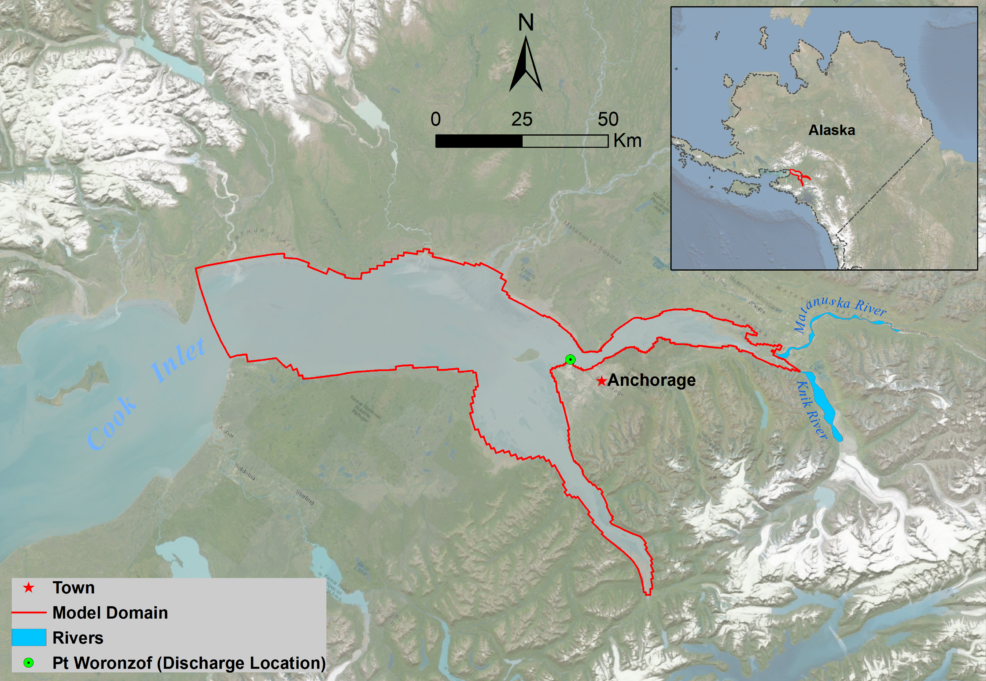
Coastline Engineering Achorage, AK, USA and CH2M Engineering for Anchorage Water Wastewater Utility, Anchorage, AK, USA
From 2009 – To 2010
EPA extended the NPDES permit
The U.S. EPA undertook a review of the Anchorage Water and Wastewater Utility (AWWU) at Point Woronzof. Application for renewal of the Asplund National Pollutant Discharge Elimination System (NPDES) permit and associated 301(h) waiver, required a biological evaluation to determine whether permit re-authorization was likely to affect the continued existence of the Beluga whale and other species protected by the Endangered Species Act (ESA), or adversely modify their habitat. The Cook Inlet beluga is no longer the target of commercial harvesting, however, population has not recovered since being ESA-listed in 2008 and it continues to face a number of ongoing anthropogenic threats.
Numerical modeling was used to quantify effluent constituent concentrations in receiving waters and sediments affected by the discharge.

Upper Cook Inlet, Alaska.
EFDC was selected as the most appropriate farfield model to address the mixing, fate, and transport of the pollutants of concern. EFDC+ Explorer was used to simulate the hydrodynamic and transport processes based on: tidal forcing; density effects; open water and iced-over conditions; an integrated nearfield plume sub-model dynamically coupled to the farfield circulation model; wind-generated currents; inflow from major rivers; and effluent loading from AWWU. The resulting model was successfully calibrated and produced accurate circulation simulations and a nearfield plume dilution study. The model was helpful in providing the ecological risk assessment.